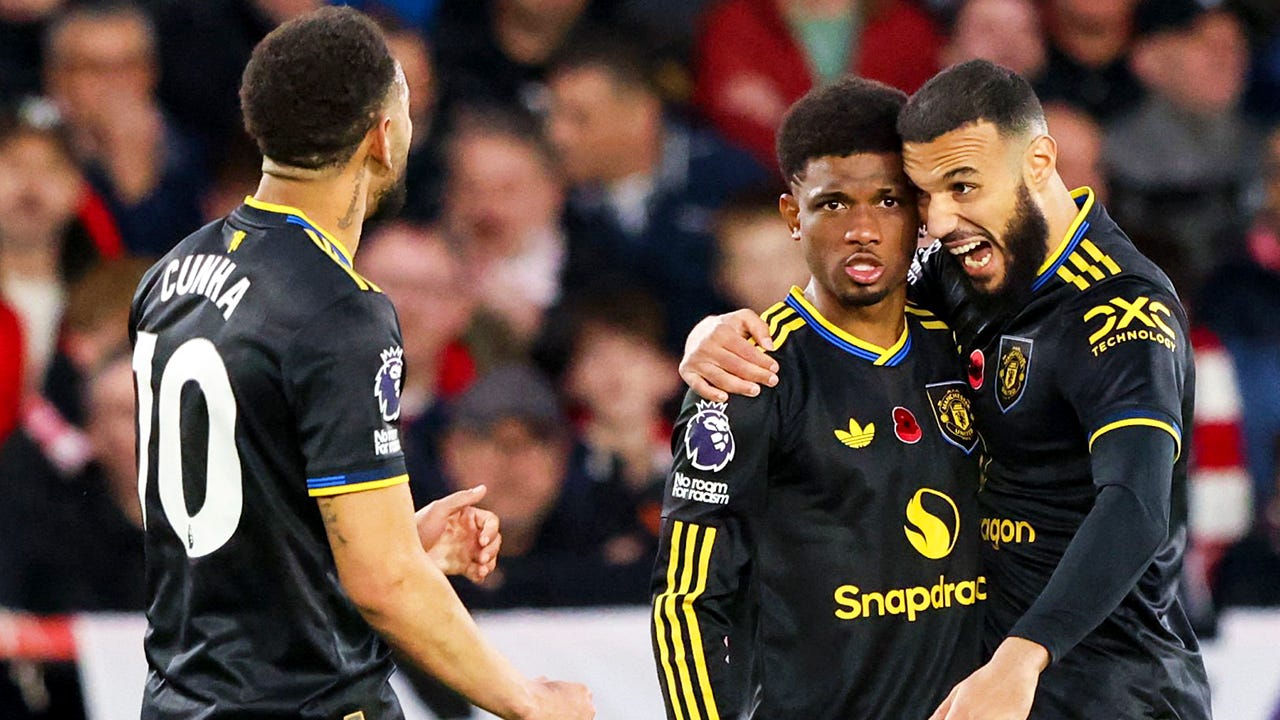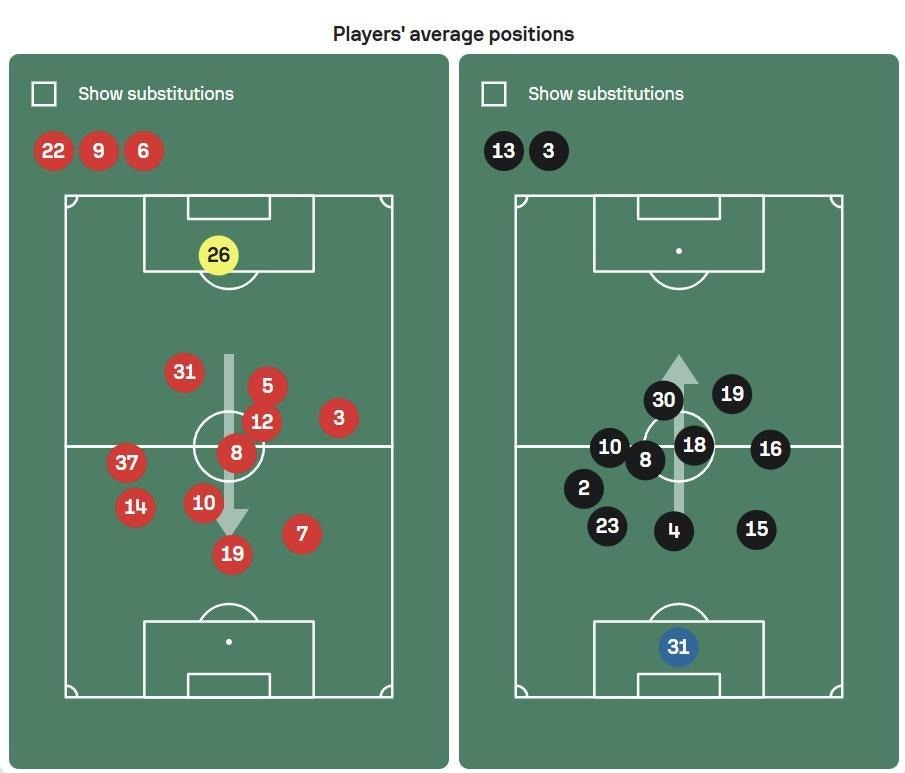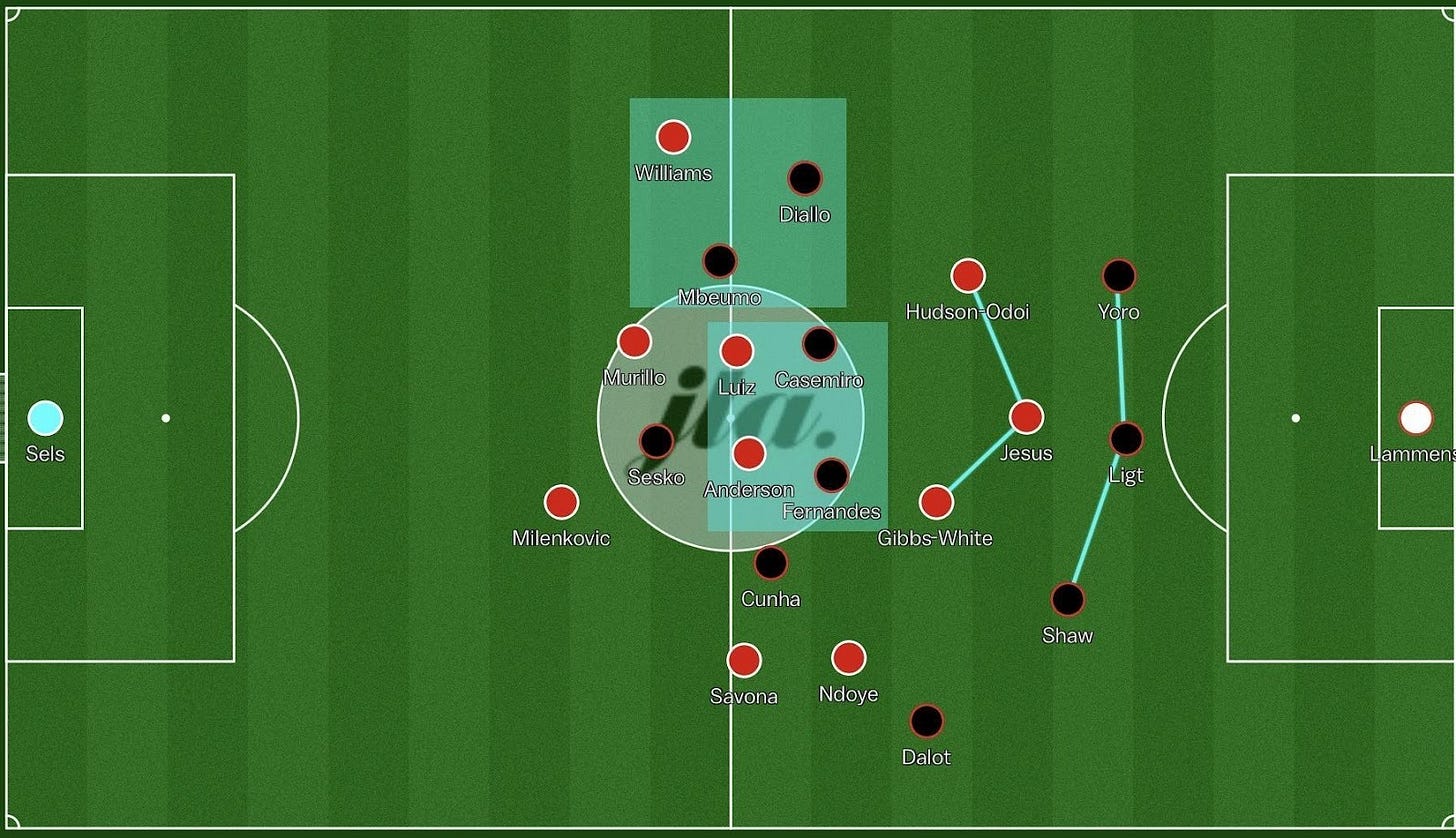The best of Saturday’s 3 o’clock kick-offs featured a thrilling clash at the City Ground between Nottingham Forest and Manchester United. It was a fixture that promised plenty of intensity, with both sides entering the contest in vastly contrasting form. The visitors arrived full of confidence, having won four of their last five matches, including an impressive victory at Anfield and a dominant performance at home against Chelsea. Ruben Amorim’s team appeared to be finding rhythm and consistency after a mixed start to the season, and they travelled to Nottingham eager to continue their momentum. Forest, meanwhile, were in desperate need of a result. The home side had struggled for points in recent weeks and were still searching for their first points in the league since their trip to Turf Moor on the 20th of September. Sean Dyche’s men knew the importance of turning their form around, especially their home form. With both teams having plenty to play for, the stage was perfectly set for an engaging and hard-fought Premier League encounter.
How The Game Played Out
Games can often be won or lost in a matter of moments, and this match was no different. Forest once again found themselves undone by a familiar problem, conceding from a corner for the second consecutive week - and, remarkably, a corner that shouldn’t have been. That lapse proved costly early on, but Forest showed real character in their response. After going 1–0 down, they came out after the break with renewed energy and purpose, immediately taking control of the tempo. Their persistence was rewarded just three minutes into the second half when Morgan Gibbs-White rose superbly to meet a cross and guided a perfectly directed header beyond the goalkeeper in the 48th minute. Only two minutes later, Nicolo Savona capitalised on some shoddy United defending, reacting quickest inside the box to turn the game on its head and give Forest a deserved 2–1 lead.
United, however, continued to press as the game wore on, and their late equaliser felt a fair reflection of the overall pattern of play. Forest’s defensive frailties at set pieces again proved their undoing, as Amad Diallo produced a moment of genuine quality to strike home a controlled volley, punishing another lapse in organisation. It was a moment that summed up the afternoon - flashes of brilliance deciding a contest shaped by defensive uncertainty and small margins.
Tactical Battles
The average positions of both teams showcased how tight the game was in open play and even more so why all the goals came from lapses in concentration or set pieces.
Forest’s average positions (left) and United’s average positions (right)
You could see from the outset that there were mismatches all over the pitch, with both sides finding areas that suited their respective styles at different moments. Forest set up to go man-for-man against United’s back three, fully aware that, to make the most of his system, Amorim relies on his wide centre-backs - Shaw and Yoro - stepping forward confidently with the ball, while De Ligt stays deeper to provide cover. United, in contrast, preferred to form a 3–2 structure during their build-up, giving them greater stability and control in the first phase of possession. Forest, meanwhile, adopted a compact box shape between their midfield pivot and central defenders, a setup that helped them to close space efficiently. This approach benefited Forest by allowing them to isolate Sesko effectively while still maintaining numerical equilibrium in midfield.
For United, the use of Amad as a wing-back adds an extra layer of threat down their right-hand side and frequently creates a 2v1 situation against the opposing full-back (in this case, Neco Williams). This overload constantly tests Forest’s defensive organisation and their ability to provide support. When United manage to engineer this 2v1, it forces one of Douglas Luiz, Elliott Anderson, or Callum Hudson-Odoi to shift across to help cover the space. That defensive rotation, however, comes at a cost. As soon as one of those midfielders is drawn out of position, it frees up Casemiro to find pockets of space in central areas. In turn, that allows Bruno Fernandes - United’s main creative spark - greater freedom to operate between the lines, dictate play, and influence attacking transitions more effectively.
Individual Quality
Finally, despite those key moments ultimately deciding the game, there was one performance that truly stood out to me - up stepped Matheus Cunha.
In a match defined by fine margins and shifting momentum, Cunha’s influence was impossible to ignore. Even though he neither scored nor assisted, his impact went far beyond those numbers. He was a constant menace to Forest’s back four throughout, pressing intelligently, driving forward with intent, and consistently finding pockets in the left half space that unsettled Forest’s back four.
70 Touches
4 Key passes
60% Dribble success
11/17 Total duels won (both ground and aerial)
100% Long ball completion
On the surface, Cunha’s start to life at United has been slow, with just the one league goal thus far. However, his underlying numbers are impressive and this game showcased such, if Cunha can start getting similar output as he did last season - he and United will be a real problem for many teams this season.
Andros Townsend On Pill Addiction, Worst Loan and Favourite Goal Witnessed
Following this week’s Ripple Effect pod, Andros Townsend answered your best questions exclusively for the JLA Substack.








